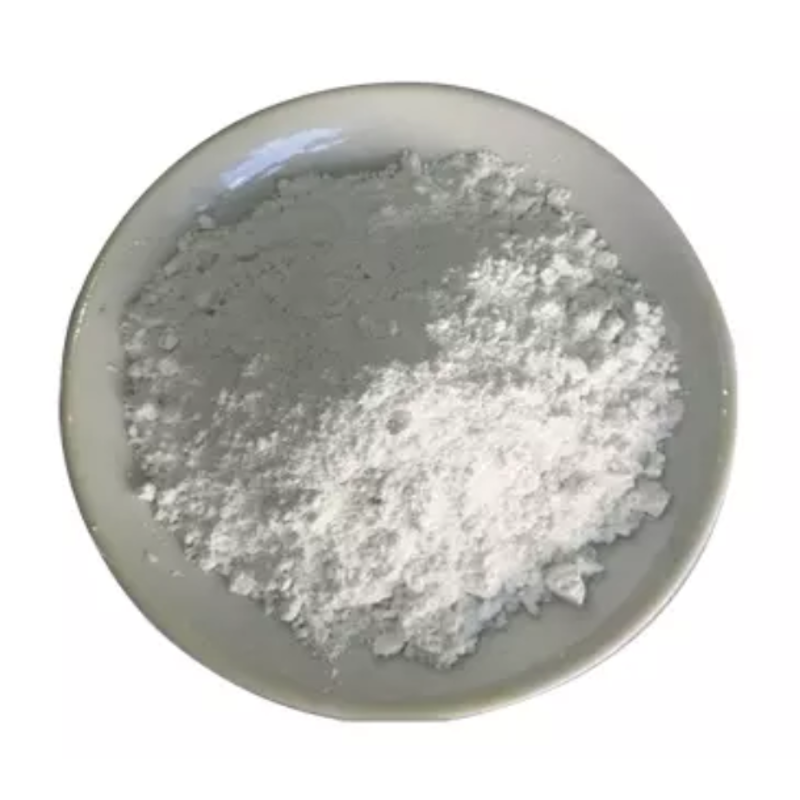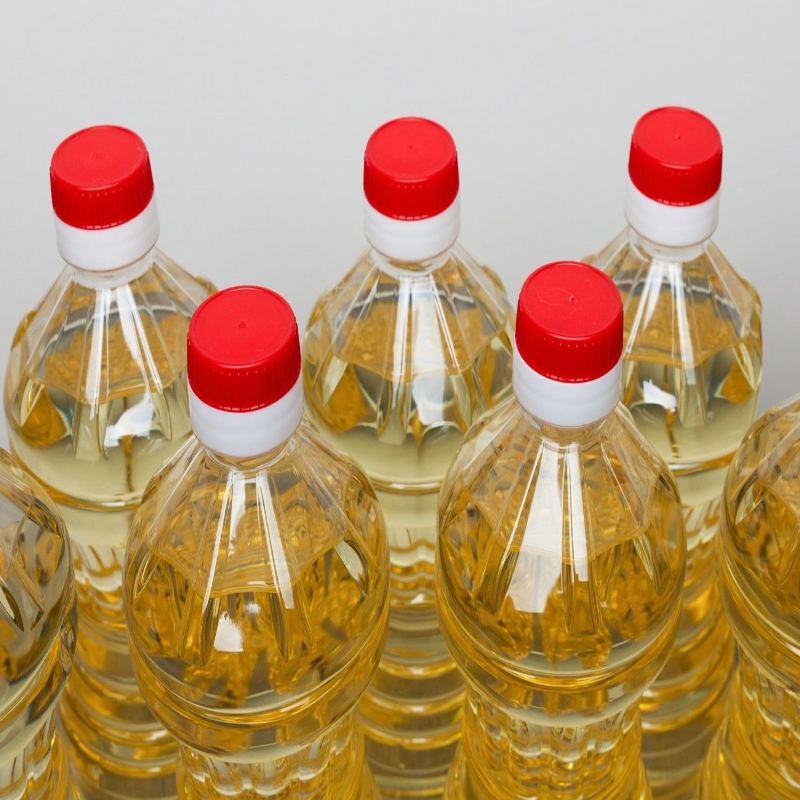The development and application of enzyme preparations for feeding in China.
-
Last Update: 2020-07-29
-
Source: Internet
-
Author: User
Search more information of high quality chemicals, good prices and reliable suppliers, visit
www.echemi.com
Abstract: Enzymes are a kind of biocatalytic polymer produced by living cells, enzyme preparation is the enzyme produced in the organism after purification processing products, its action conditions are mild, low energy consumption and chemical pollution is small, and feeding enzyme preparation as a green biocatalyst, canfeed resource utilization and economic benefits, control environmental pollutionThis paper summarizes the classification, production methods and development of the feeding enzyme preparations, and looks forward to the development of enzyme preparationsTJ6keywords: feeding enzymes; classification; production methods; development status; trend TJ6in the figure classification number: S 81679 document mark code: A article number: 1002 - 2813 (2014) 17 - 0005 - 02 TJ6enzyme salyse from living cells with biocatalytic function of polymer substances, most enzymes are proteins involved in the body's biochemical reactionsEnzymes are specific and efficient, so-called specificity refers to an enzyme can only catalyze the reaction of one or a specific substrate, but the enzyme's specificity is not absolute, and sometimes it can also catalyze a variety of chemical structures similar substrates; High efficiency means that the catalytic efficiency of the enzyme is higher than that of an inorganic catalystEnzymes are widely present in organisms, especially bacteria and fungi and other microorganisms, enzyme preparations are extracted from animals, plants and microorganisms processed with enzyme properties of a class of substances, the main role is to catalyze food processing and other production processes occurred in a variety of chemical reactions, the main characteristics are high catalytic efficiency and high degree of specificity, in addition, in the reaction process, the effect of mild conditions, low energy consumption and the resulting chemical pollution, in textiles, food (flour and fruit processing industry, etc.)TJ61The classification of TJ6feed enzymes are varied and can be divided into digestive enzymes and non-digestion enzymesAmong them, digestive enzymes include proteases, amylase and lipase, according to the reaction of the most suitable pH, protease can be divided into acidic, neutral and alkaline protease, this enzyme is mainly used to degrade the animal digestive tract starch and protein and other substances, making it peptides and cyanosus and other small molecular substances, conducive to animal digestion and absorptionNon-digestion enzymes refer to enzymes that animals themselves cannot secrete into the digestive tract, mostly from microorganisms, these enzymes can digest the animal's own indigestible substances or degrade some anti-nutritional factors, including cellulase, hemicellase, phytoase, beta-glucanase, pectinase, glucanase and glucotoseThe main function of non-digestion enzymes is to crack the cell wall, typical plant cell wall composition includes fibrosis polysaccharides (mainly cellulose), matrix polysaccharides (pectin, hemicellulose and a small amount of glycoprotein) and shelled substances (mainly lignin)Non-digestion enzymes destroy fiber-rich cell walls, on the one hand, to release the starch, protein and minerals encased in it, and on the other hand, to degrade the cellulose part into digestible and absorbable reduced sugar, thereby increasing the digestion rate of dry substances, proteins, coarse fibers, starch and minerals in livestock feedNon-digestion enzymes in the viscous polysaccharide hydrolysis, such as beta-glucanase and xylitose, are the corresponding substances in the feed hydrolysis, eliminating his adverse reactions to the digestion and absorption of nutrients, and thus improve the utilization rate of feed TJ6 can be divided into single enzyme synthases and compound enzymes according to their composition type Single enzymes such as amylase, protease, lipase, alpha-glutamate, cellulase and phytoase The compound enzyme is made up of one or more monoenzymes as the main body, combined with other monoenzymes, or obtained by fermentation of one or more microorganisms Generally speaking, the use of compound enzyme preparation synthases is better than a single enzyme preparation, but not that the more enzyme types in the compound enzyme preparation, the better, but to combine the physiological characteristics of animals and feed raw materials to determine the type of enzyme TJ6 enzymes in the compound enzyme preparation complement each other, complement each other, destroy the anti-nutrition factors in feed raw materials, thus promoting animal growth, improve animal immunity, and animal production performance has been improved TJ6 2 The production method of the feed enzyme preparation TJ6 the enzyme seine produced in the feed industry is basically micro-fermentation, the production method has solid fermentation and liquid fermentation Solid fermentation, also known as surface fermentation, the resulting enzyme activity is high, enzyme system is complete, low production costs, its deficiency lies in the small scale of production, production is not easy to expand, the production of workers labor intensity; Liquid fermentation has a large scale of production, small labor intensity of production workers, high degree of mechanization, easy to automatic control, easy to obtain high vitality quality and other advantages, but because of high technology and labor costs, equipment investment, limiting its application, the production of feed enzyme preparations in China is mainly the use of solid fermentation method TJ6 With the development of human society, science and technology are also more and more advanced, enzyme research and production technology is also progressing, a variety of technologies are also applied in the research and production of enzyme preparations, of which, genetic engineering technology has been used in most countries in the world, especially developed countries applied to the research of enzymes The advantage of genetic engineering is that it not only increases the yield of enzymes but also increases the stability of enzymes, in addition, the genes of enzymes produced by slow-growing plants and animals, or enzymes produced by otherwise unapproved harmful microorganisms, can also be cloned through genetic engineering to safe, fast-growing and productive microorganisms, and produced by microorganisms For example, phythyase can be produced by microorganisms such as black crankmold and bichiyyy, through geneticengineered recombination technology, recombinant Bichi yeast liquid to make its efficient expression of phytase, through measurement, found that the content of phytoase in the fermentation solution is high to 6 to 8 U/mL, than the original strain produced enzyme content increased by 3,000 times, greatly improve the enzyme yield TJ6 3 The development status of enzyme preparations in China TJ6 is divided into three stages of starting, rising and developing rapidly according to the development of enzyme industry in China In terms of annual production of enzymes, it was 480,000 t in 2005 and 77.7 percent in 2010 50,000 ts, up 29 50,000 ts, growth rate of 10 1%。 With the development needs of society, the application field of enzyme preparations in China has been expanding, its technology innovation, so that in recent years, China's enzyme preparation industry has been showing a growing trend, the growth rate has been maintained at about 10%, see Figure 1 TJ6 TJ6 TJ6 feed enzyme is a new feed additive that has emerged with the development of the enzyme industry and feed industry, which has been around for nearly 50 years In 1991, Perney and others added phytase in corn-soy meal, detected a 30% increase in the utilization rate of phosphorus in feed, and John Coihl added 600 FTU/kg to pig diet, which increased the quality of growing pigs by 21 62% to 62 31%, the material weight ratio decreased by 10 More than 11%, and the absorption and deposition rates of calcium, magnesium, phosphorus, zinc and copper were also increased In the 1970s, China began the research on feeding enzyme preparations, at the beginning of the production of enzyme stoic, and applied to fermented feed, due to technical routes, methods of use and the mixing of bacteria and other factors, and finally evolved into natural bacteria fermentation, making organic nutrient stakes lost For some time afterwards, the study of enzymes stalled Until the late 1980s, with the development of animal husbandry, foreign feed enzymes began to enter the Chinese market, stimulating the development of Enzyme preparations in China, China has been producing enzyme products By the 90's, China's feed enzyme preparation began to develop rapidly, as a new type of feed additive, it can improve the digestion and absorption rate of feed nutrients, improve the quality and stability of feed, but also reduce the pollution of the environment of the aquaculture industry Because of its high efficiency, non-toxicity and non-adverse reactions, feed enzyme preparation has become the fastest growing part of China's enzyme industry, and its application effect has been recognized In recent years, the market size of enzyme synthasis in China has also been gradually expanded, as shown in Figure 2 TJ6 TJ6 TJ6 With the rising prices of feed feed raw materials such as corn and soybean meal, China's feed has been limited to the general corn-soybean meal-type diet, but also on this basis to add different proportions of barley, wheat or cotton meal and other unconventional feed raw materials, these unconventional feed The addition of raw materials makes the application of feed enzyme preparationmore and more common, its position in the feed industry is also rising, there are a large number of anti-nutrition factors of this feed raw materials, compared with corn and soybean meal, the price is low, so with their influx, will further stimulate the application of non-amyloid polysaclysase and so on in the feed TJ6 4 The development trend of the feed enzyme preparation TJ6 as a green biocatalyst, canfeed resource utilization rate and economic benefits, control environmental pollution, and vigorously develop the feeding enzyme preparation, is the key to maintain this balance Although the application of feed enzyme preparations has broad prospects, there are still the following bottlenecks: how to choose the appropriate way to add, is directly in the animal body or in vitro addition; How to add according to the different growth stages of the animal; The diversification of feed raw materials and the differences between animal individuals, how to add enzyme preparations; How to give full play to the advantages of solid fermentation and liquid fermentation, to produce a stable quality, high yield and low-cost enzyme preparations; How to solve the relationship between compound enzymes and mutual inhibition; How to solve the effect on the micro-ecological balance of animals With the development of human research means and scientific technology, feed additives will be more and more adapted to the requirements of different fields, solve the development of human society energy, food and environment and many other problems, to achieve sustainable development TJ6 ReferenceS TJ6 1) Chaplin M F, Bucke C Enzyme Technology London: Cambridge TJ6 University Press, 1990 TJ6 Bear Fly Status and Prospects of Application of EnzymeS for Feed The Science of Livestock and Feed, 2010, 31 (3) : 22 - 23 TJ6 Shi Baojun, Cui Xiaopeng, Wang Min, etc the application of enzymes in animal feed research progress TJ6 Wan Mingchun Research and Application of Enzymes for Feeding (J) Jiangxi Agricultural Journal, 2001,13 (3) : 43 - 49 TJ6 Chen Fangyan, Wang Linchuan, Feng Dingyuan, etc Application of enzyme engineering in the feed industry A/ Feng Dingyuan Research and application of feed enzyme preparations Beijing: China Agricultural Science and Technology Press, 2009: 23 - 28 TJ6 TJ6 , Li Defa, Yang Quanming Research and Application of Forage Enzymes Feed Expo, 1998 (1) : 5 - 8 TJ6 Soviet Army, Chen Daiwen Research progress in animal nutrition of non-starch polysaccharides preparations J Livestock Ecology, 2006, 27 (1) : 79 - 83 TJ6 Abstract: Enzymes are a class of biocatalytic polymerproduced by living cells, enzyme seisy seises are products that are purified and processed in organisms, with mild conditions, low energy consumption and small chemical contamination, and feed enzyme synthases as a green biocatalyst, canfeed resource utilization and economic benefits, control environmental pollution This paper summarizes the classification, production methods and development of the feeding enzyme preparations, and looks forward to the development of enzyme preparations TJ6 keywords: feeding enzymes; classification; production methods; development status; trend TJ6 in the figure classification number: S 816 79 document mark code: A article number: 1002 - 2813 (2014) 17 - 0005 - 02 TJ6 enzyme salyse from living cells with biocatalytic function of polymer substances, most enzymes are proteins involved in the body's biochemical reactions Enzymes are specific and efficient, so-called specificity refers to an enzyme can only catalyze the reaction of one or a specific substrate, but the enzyme's specificity is not absolute, and sometimes it can also catalyze a variety of chemical structures similar substrates; High efficiency means that the catalytic efficiency of the enzyme is higher than that of an inorganic catalyst Enzymes are widely present in organisms, especially bacteria and fungi and other microorganisms, enzyme preparations are extracted from animals, plants and microorganisms processed with enzyme properties of a class of substances, the main role is to catalyze food processing and other production processes occurred in a variety of chemical reactions, the main characteristics are high catalytic efficiency and high degree of specificity, in addition, in the reaction process, the effect of mild conditions, low energy consumption and the resulting chemical pollution, in textiles, food (flour and fruit processing industry, etc.)TJ6 1 The classification of TJ6 feed enzymes are varied and can be divided into digestive enzymes and non-digestion enzymes Among them, digestive enzymes include proteases, amylase and lipase, according to the reaction of the most suitable pH, protease can be divided into acidic, neutral and alkaline protease, this enzyme is mainly used to degrade the animal digestive tract starch and protein and other substances, making it peptides and cyanosus and other small molecular substances, conducive to animal digestion and absorption Non-digestion enzymes refer to enzymes that animals themselves cannot secrete into the digestive tract, mostly from microorganisms, these enzymes can digest the animal's own indigestible substances or degrade some anti-nutritional factors, including cellulase, hemicellase, phytoase, beta-glucanase, pectinase, glucanase and glucotose The main function of non-digestion enzymes is to crack the cell wall, typical plant cell wall composition includes fibrosis polysaccharides (mainly cellulose), matrix polysaccharides (pectin, hemicellulose and a small amount of glycoprotein) and shelled substances (mainly lignin) Non-digestion enzymes destroy fiber-rich cell walls, releasing, digesting, and digesting the starch, protein and minerals they wrap in, and partially degrading cellulose into digestible and absorbable reductions.
This article is an English version of an article which is originally in the Chinese language on echemi.com and is provided for information purposes only.
This website makes no representation or warranty of any kind, either expressed or implied, as to the accuracy, completeness ownership or reliability of
the article or any translations thereof. If you have any concerns or complaints relating to the article, please send an email, providing a detailed
description of the concern or complaint, to
service@echemi.com. A staff member will contact you within 5 working days. Once verified, infringing content
will be removed immediately.







